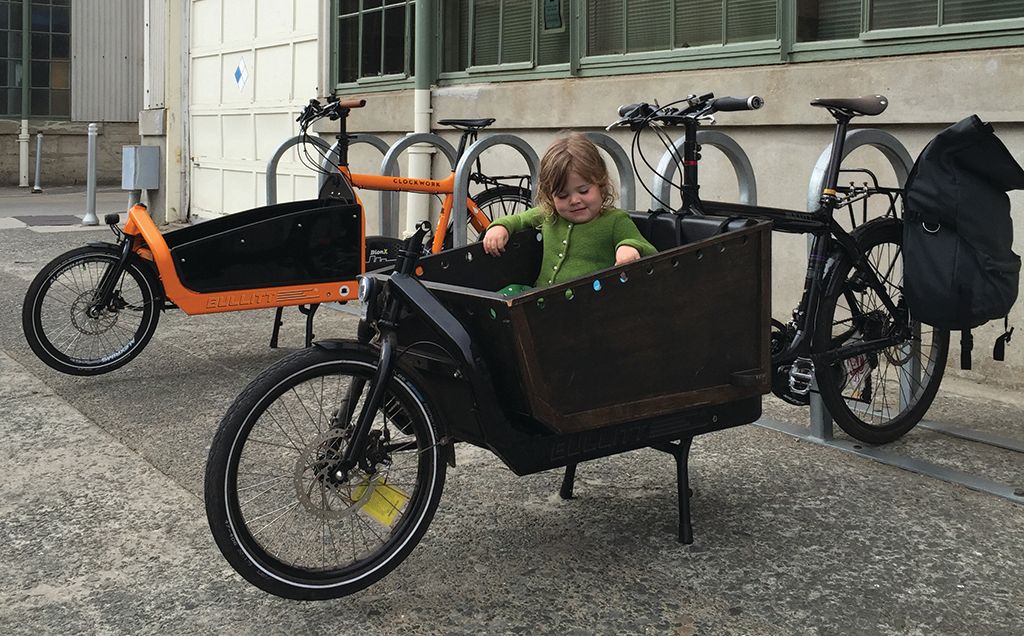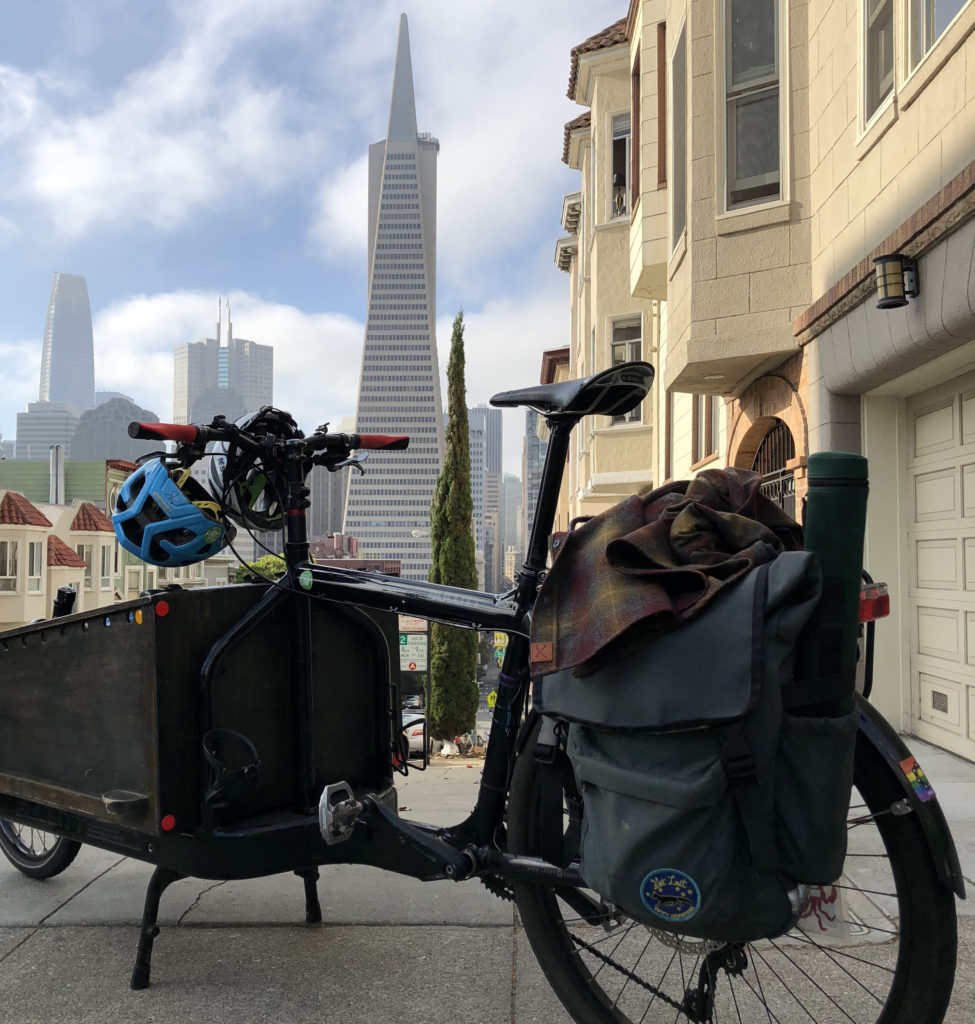Save money. With a cargo bike or e-bike, you’ll use a car far less frequently. This means less money spent on gas, parking, maintenance. It also means reduced insurance premiums with the lowered mileage. As your car use drops, you may find it is time to lose 3,000 pounds, downsizing to a one-car or no-car household. With the rise of hourly car share services, this is a cost-effective way to access cars on your terms instead of having tens of thousands of dollars tied up in a mechanical device that just sits unused 95% of the time. And don’t forget to save additional money — look for cargo bike and e-bike incentives. Some cities, regional air quality districts, and states have e-bike or car trade-in incentive programs that can make the initial bike purchase easier.
Save time and stress. Imagine taking the guesswork out of commute times and school drop-offs. Bad traffic? It doesn’t matter when you’re rolling down the bike lane, passing those stressed-out drivers. The bus is unpredictable? A bike commute isn’t. Nor does a bike have to wait in the school drop-off line of cars. In addition, every minute on a bike is time deducted from the “when will I find time to work out,” worry.

Safe routes. Over the last few years, more and more infrastructure has been developed to protect cyclists. Governmental agencies have recognized that every person on a bike is one less car. Fewer cars mean less congestion. How do you get people out of cars? Help people feel safe. The pandemic, in a strange way, has accelerated this process. People took to bikes in a way no-one could predict. Have any doubts about this? Try buying a bike or getting an appointment for a tune-up at the local bike shop. There’s safety in numbers. As more riders are on the streets, drivers are forced to give them space and be more aware. Additionally, street spaces that drivers felt were theirs alone have been retaken. Cities have implemented networked Safe Streets programs, giving priority to bikes, walkers, joggers, and play during the pandemic. Given their success, they are likely to be staying. Likewise, outdoor dining has transformed parking spaces and streetscapes, both reducing and slowing down traffic. You better believe merchants will fight to keep the outdoor space they’ve won for themselves. While bike infrastructure still has a long way to go, it has never felt as safe to get around town on a bike as it does now.
Save the environment. As climate change impacts all of us, there’s a certain pleasure to knowing that turning over the pedals, instead of turning over the ignition, is one’s chosen mode.
Stay fit. One of the great aspects of e-bikes is that they are still bikes. The electric assist can be dialed down when you’re feeling fit and dialed up when you want to arrive without a drop of sweat on you. And for those of you who like a challenge, there’s always the old-fashioned way: a cargo bike without a motor.

If you have questions about cargo bikes, set-ups, best practices, or whether to go electric, and to get other tips we’ve learned along the way, visit our cargo bikes tips page at https://www.bicyclelaw.com/cargo-bikes/.


